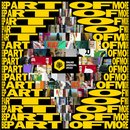“The digital era has changed our need for images” – D&AD Photography Jury President on new commercial challenges
Nathalie Maudet unpacks the role of photography in light of social media and 360 campaigns

Nathalie Maudet is Art Buying Director of the Publicis Conseil, Marcel, Leo Burnett, Saatchi & Saatchi and Publicis Sapient agencies (Paris). She began her career in the Music Industry as an artist manager at Sony, before joining Publicis group, where she has worked for over 20 years. Now heading up the Photography jury for the 2021 D&AD Awards, Maudet outlines what she sees as the biggest challenges for the medium today.
The digital era has changed our need for images, we have moved from the art of communication to the art of information. A revolution has transformed our mode of production and creative practice, led by the decline of the big classic media billboards and press – those real showcases, where the image had to be relevant, well crafted, strong and never mediocre.
On the web, consumers are looking for information and everything goes very quickly – we surf, we compare, but we rarely linger. We digest images that are no longer really there to convey a message but often merely to accompany it. The high standards and the quality of the visuals are therefore impacted, but it should not be fatal. We must remain more relevant than ever, curious and demanding when everything is changing so quickly, and the messages are multiplying.
“we surf, we compare, we rarely linger”
We are in an era of exchanges and conversations. Agencies and advertisers no longer have a monopoly on speech and consumers take precedence over brands via social networks. This is sometimes a good thing, but does this new mode of communication make us less likely to take risks, smoothing over our messages, our images? Are we so concerned with serving up palatable messages to the detriment of impactful images?
The development of the 360 campaign also requires more expertise and organisation, and longer circuits upstream – the artistic director is no longer alone in the driver's seat. The strength of the creative idea is often diluted, shared, sometimes even sanitized. This proliferation of experts and media outlets makes the creation, the design and the distribution of a campaign much more expensive and so production budgets are cut. Should we therefore sacrifice photographic quality? Certainly not.
“An image alone can convey the intensity of a message and permanently position the brand identity”
"A picture is worth a thousand words." An image alone can convey the intensity of a message and permanently position the brand identity. It has to not only meet our expectations but to lift them. How do we differentiate ourselves from so many conventional images and uninspiring messages? How do we break free from an Instagram culture, and stop the bland, overly polished and sugar-coated imagery? Of course, this is the real challenge for agencies, but also for photographers.
“How do we break free from an Instagram culture, and stop the bland, overly polished and sugar-coated imagery? ”
Creative excellence is at the heart of this discipline, and it is not only the responsibility of the creatives. Artists have their role to play more than ever; they must be able to breathe new life into it, a new vision – craft is essential. Tomorrow’s advertising images must be able to stand out, they should stir emotion, whatever that be, whether by shock, surprise, beauty, depth, innovation. Can it exist in all mediums with the same force, to the same high expectations, the same intensity?
Photography has a future. No, not everyone is a photographer. We need real talent more than ever, that surprises us and nurtures this need to feel and see the world differently. Focusing on artists showing agility and innovation while preserving photographic quality and standards – this is how we can restore power to the image.



